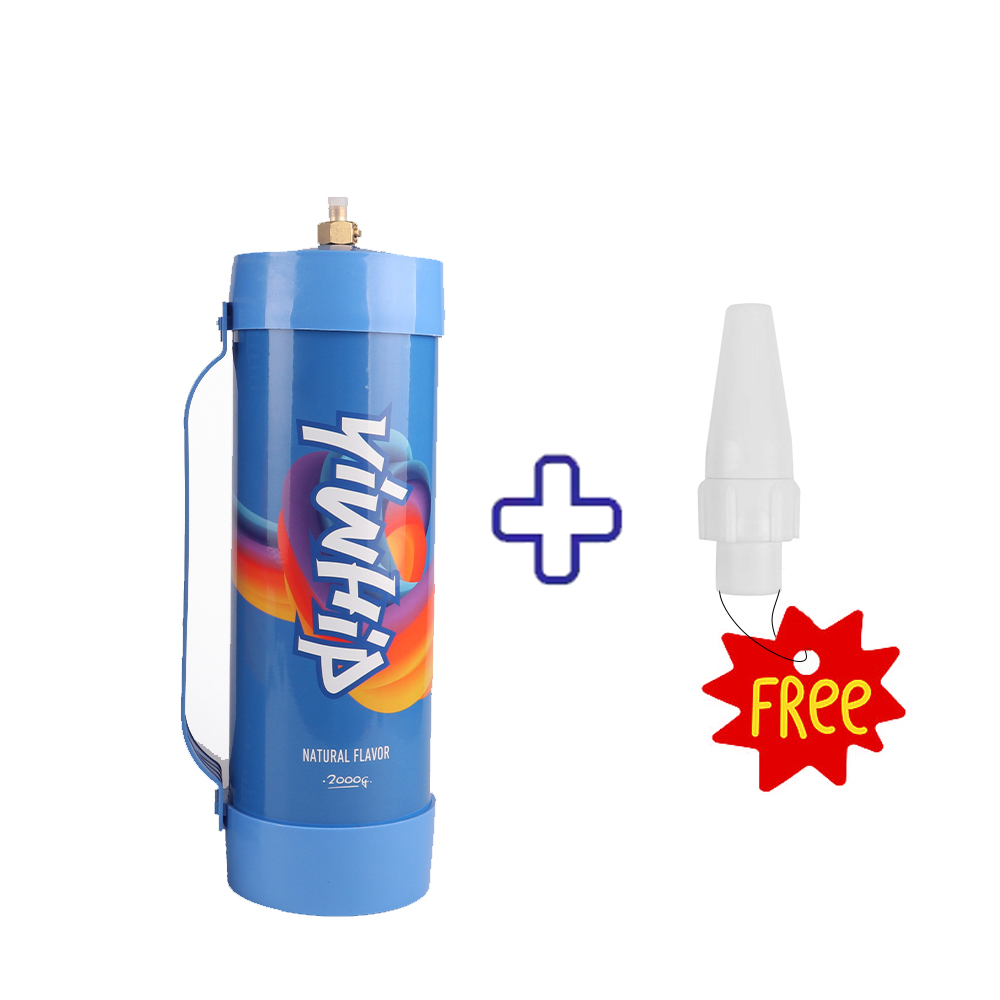Unpacking the Hype Around Disposable Whipped Cream Chargers and Their Impact
Baking, coffee culture, and dessert-making at home are surging trends in households across Mexico — and right alongside that surge comes our reliance on convenience tools like whipped cream dispensers. However, as more and more families experiment with culinary arts inside their own kitchens, a lesser-acknowledged side to these nifty devices begins to unravel.
Sustainable awareness is growing, and yet, when faced with a fast solution versus an eco-responsible option, convenience often wins out. What if that shortcut carries unintended consequences for both people and the planet? Let's take the lid off the whipped cream dispensing trend and reveal some surprising realities we might otherwise overlook in the excitement.
Cleaning Up Your Kitchen Routine Isn’t As Simple as You Think
The ease of using whipped cream from a can might tempt you, especially when crafting latte toppings or decadent whipped cream layers feels simpler than ever before. But behind that simplicity lurks a hidden burden: single-use chargers generate waste with every use. For the environmentally-conscious consumer, it may seem trivial, but Mexico generated more than 650 tons of domestic waste per day, much of which included disposables not designed for easy decomposition.
Consider this: each charger holds just enough nitrous oxide (commonly known as “whip it" gas) sealed within steel shells. Once you’re done indulging in those lattes, that container joins landfills indefinitely unless properly processed. This accumulation is subtle — almost silent, just like its name “disposable whipped cream dispenser" implies. And yet over months of steady use, those seemingly small emissions become massive pollutants to local environments.
Health Risks You Might Not Realize You're Taking Every Time You Dispense
While these cans make quick work of fluff-filled froth topping your pancakes or hot chocolate, did you know that sometimes improper handling can result in exposure to excessive nitrous oxide? That's not something many read about when buying one of these kits online.
- Dizziness or headaches, especially after inhaling too much directly, could be mistaken for momentary fatigue rather than symptoms pointing toward short-term misuse of these gases;
- Nitric oxide inhalation, when unmonitored, may also temporarily affect blood oxygen saturation, potentially putting at-risk groups—like elderly consumers or children—in harm’s way even unintentionally;
- Poor product design has led to leaks or unexpected bursts during pressurization phases;
Eco-Friendly Options: Better Alternatives Right at Home
If convenience isn’t worth compromising long-term ecological health and personal well-being, what choices lie ahead? Here’s a refreshing fact: creating your very own natural whipped cream is easier than it sounds, and the only investment required includes nothing more complex than reusable whipping equipment and a sturdy stainless cream shaker.
Haz una prueba con este método simple:
- Cold cream (with no unnecessary fillers),
- Cold bowl, chilled mixer,
- Few minutes of muscle power – voilà!
You save money long term by cutting the middle man entirely — store-bought pre-pressurized versions don’t stand up in quality comparison against homemade fresh creations! Moreover, you keep your footprint minimalistic while enjoying rich, creamy textures minus any artificial residue lurking between flavor notes.
Thinking About Going Green? Rethinking Daily Habits Helps
Making changes starts locally but impacts communities far beyond our immediate surroundings. When you stop choosing single-use dispensers filled with gas charges daily, think globally, act consciously:
We live once, and so does our environment. It needs more allies now, starting with how everyday choices compound into real effects. One overlooked swap today builds resilience tomorrow — whether it’s for family meals or global warming considerations.
In the end… Simplicity speaks volumes in conservation efforts — let's start listening where silence screams loudest.
The Bottom Line: What Should You Do?
If sustainability is close to your heart—and you happen to crave the richness of hand-whipped cloud-like texture—we suggest evaluating the frequency and purpose of whipped dispenser use before diving headfirst into regular purchase routines. There truly exists an array of kitchen solutions ready to help recreate gourmet-style presentation minus the waste tolls linked to synthetic delivery.
Here’s what experts recommend: ⇒ Explore alternative ways to add richness without canned creams ⇒ Reconsider reusing containers made responsibly rather than throwing them post-single-use cycles away ⇒ Understand the risks linked with overconsumption of chemical-based gasses found inside certain whipped toppings ⇒ Invest time and effort wisely when possible: making food with care brings rewards far richer than mere taste fulfillment alone
Summary of Key Takeaways
- Silent environmental impact: Despite their harmless appearance, disposable whipping gadgets create pollution with every disposal phase.
- Safety risks aren't limited to misuse: Unintentional gas exposure occurs frequently in busy kitchens due to careless handling and poor storage.
- Better alternatives already exist: Homemade cream mixing beats industrial products both financially and nutritionally.
- Ethics meet efficiency in mindful decision-making: Every kitchen shift toward sustainability plays an irreplaceable role in future-proofing the globe.
A Final Word on Conscious Consumer Choices
To all home chefs out there in sunny towns from Cancún to Monterrey — you’ve got a remarkable influence on how food trends shape cultural narratives and planetary stewardship alike. The question becomes less "Is my whipped dispenser necessary?" and more: "What habits will I cultivate next?" Because change doesn't always arrive through sweeping revolutions — more frequently, it unfolds softly beneath our countertops and refrigerated aisles, quietly awaiting acknowledgment in tiny moments.

